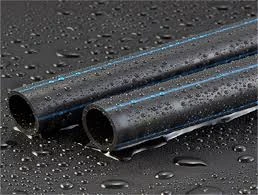Aug . 13, 2024 14:42 Back to list
Exploring Various Types of Water Pipe Fittings for Efficient Plumbing Solutions and Installations
Understanding Water Pipe Fittings An Essential Component of Plumbing Systems
Water pipe fittings are critical components in any plumbing system, providing essential connections between pipes, valves, and appliances. Their primary function is to ensure that water flows efficiently and safely throughout residential, commercial, and industrial buildings. This article delves into the various types, materials, and functions of water pipe fittings, highlighting their importance in modern plumbing.
Types of Water Pipe Fittings
Water pipe fittings come in various shapes and sizes, each designed for specific applications. The most common types include
1. Elbows These fittings allow for the change of direction in piping, typically at either 45 or 90 degrees. Elbows help navigate plumbing routes around obstacles.
2. Tees Shaped like the letter T, these fittings enable a branch line to be connected to the main pipeline, facilitating the distribution of water to multiple fixtures.
3. Couplings Used to connect two sections of pipe, couplings can be either straight or reducing, accommodating pipes of different diameters.
4. Reducers When there is a need to connect pipes of varying sizes, reducers come into play. They taper from a larger diameter to a smaller diameter, ensuring a seamless flow.
5. Caps and Plugs These fittings are used to seal the ends of pipes, preventing water from escaping. Caps are used for external pipe ends, while plugs serve internal purposes.
6. Unions Unions provide a way to connect and disconnect pipes easily. They are particularly useful during maintenance, allowing easy removal of sections without cutting the pipe.
Materials Used in Water Pipe Fittings
water pipe fittings

The materials used in manufacturing water pipe fittings significantly impact their durability, cost, and overall performance. Common materials include
- PVC (Polyvinyl Chloride) This lightweight plastic is commonly used for water fittings due to its corrosion resistance and ease of installation. It's ideal for cold water applications.
- CPVC (Chlorinated Polyvinyl Chloride) Similar to PVC but with a higher temperature tolerance, making it suitable for hot water systems.
- Copper Known for its longevity and antimicrobial properties, copper fittings are widely used in residential plumbing, particularly for hot and cold water supplies.
- Brass An alloy of copper and zinc, brass fittings are durable and resist corrosion, often used in plumbing systems for their strength and reliability.
- Stainless Steel Renowned for its resistance to corrosion and ability to withstand extreme temperatures, stainless steel is used in specialized applications, including industrial settings.
The Importance of Quality Fittings
Choosing the right water pipe fittings is crucial for the longevity and efficiency of a plumbing system. Poor quality fittings can lead to leaks, water damage, and costly repairs. It's essential to consider factors such as compatibility with existing pipes, the pressure and temperature of the water being transported, and the specific requirements of the application when selecting fittings.
Conclusion
In summary, water pipe fittings play a vital role in the functionality of plumbing systems. With various types available, from elbows to tees and reducers, and manufactured from diverse materials like PVC, copper, and stainless steel, understanding these components is essential for anyone involved in plumbing. When installing or maintaining a plumbing system, it is paramount to choose high-quality fittings to ensure safety, efficiency, and long-term performance. By doing so, homeowners and businesses can enjoy a reliable and effective water supply system for years to come.
-
High-Quality PPR Pipes and Fittings Durable ERA PPR & PVC PPR Solutions
NewsJul.08,2025
-
Black HDPE Cutting Board - Durable, Non-Porous & Food Safe HDPE Plastic Cutting Board
NewsJul.08,2025
-
High-Quality CPVC Panel Durable HDPE & PVC Panels Supplier
NewsJul.08,2025
-
Double PE Welding Rod Supplier - High Strength, Durable & Versatile Welding Solutions
NewsJul.07,2025
-
High-Quality PVC-O Pipe Supplier Durable 75mm PVC Pipe & Connections Leading PVC Pipe Company
NewsJul.07,2025
-
HDPE Drainage Pipe Supplier – Durable & Corrosion-Resistant Solutions
NewsJul.06,2025

